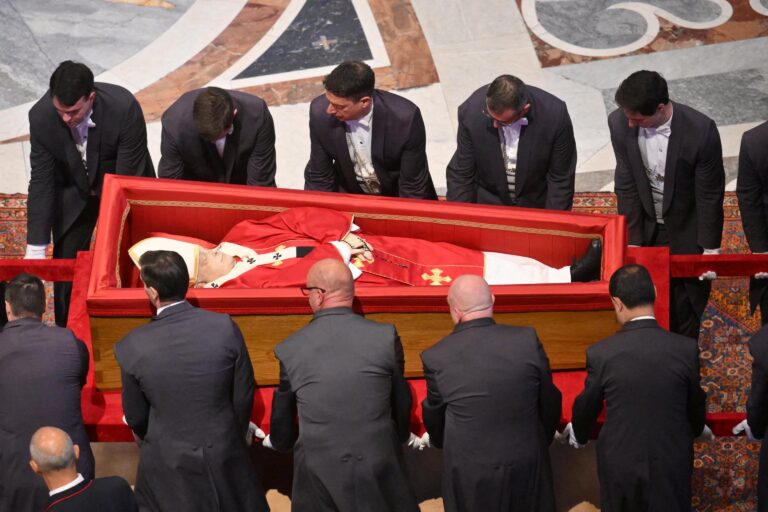
The demonstration that took down East Germany
On November 4, 1989, a cabal of East German creatives and intellectuals demanded democratic reform. The result was an enormous demonstration that catalyzed the fall of the Berlin Wall.
By November 1989, rumors had long been flying that change was inevitable in communist East Germany.
Citizens were turning their backs in droves on the politically and economically bankrupt state. Week after week in Leipzig, thousands demanded the right to travel without restrictions and freely express themselves. Even Erich Honecker, once the most powerful man in East Germany, relinquished his post as head of the communist party in October 1989 to quash public anger.
Then, everything came to a head on November 4 in East Berlin. Electrified by an emboldened public, a cabal of stage and screen actors organized a demonstration at Alexanderplatz, the center of the East German capital, to voice their concerns.
What ensued became the largest demonstration in the oppressive state’s history — and catalyzed its demise just a few days later.
Germany marks 30th anniversary of Leipzig protests
A crazy idea
A month prior to the demonstration, on October 7, actors with the Deutsches Theater in East Berlin, an institution known for pushing the bounds of artistry under communist rule, met for drinks.
It was not a happy gathering. That day, during a demonstration in Dresden that coincided with the 40th anniversary of the state’s founding, officers with the Stasi — East Germany’s secret police — had brutalized protesters.
It only added to tensions already coursing through the body politic. Resistant to capitalist reform, communist party leaders refused to abandon planned economic models, even though they were impossible to realize with the state’s crumbling industrial infrastructure. Conditions for East Germans worsened and resentment spiked, as citizens compared themselves to neighboring West Germans who lived in Europe’s most thriving economy, reports at the time detailed.
A simple, but crazy, idea swirled around the group: A state-sanctioned demonstration in the center of East Berlin to discuss “the context” of the state’s constitution, which technically granted citizens the right to protest and freely express themselves.
To the group’s surprise, the ailing state approved the request on November 1.

Protesters demand freedoms of the press and assembly in East Berlin on November 4, 1989
Opening the windows
More than 20 artists, novelists, actors and academics signed up to speak at a makeshift podium and stage fashioned atop a parked truck at Alexanderplatz.
East Berliners and Germans from all over the country became energized by the prospect of a state-sanctioned protest — public dissent was usually a dangerous proposition. People flooded the streets with placards that demanded a public say in policymaking, while theater troupes from around the city took the opportunity to perform politically charged satire.
With onlookers numbering as high as 1 million according to some estimates, the state’s most revered figures took the stage.
“It’s as if someone has thrown open the windows after all these years of stagnation, after years of dullness and mustiness, of phrase-mongering and bureaucratic despotism,” declared Stefan Heym, a novelist, during his speech.
“I have difficulties in calling this a ‘turning point,'” Christa Wolf, one of the most famed writers to emerge out of East Germany, told the crowd. “I’d rather speak of revolutionary renewal.”

Germans united atop the Berlin Wall just five days after the enormous demonstration at East Berlin’s Alexanderplatz
Beginning of the end
To everyone’s surprise, high-ranking members of the ruling Socialist Unity Party (SED) also took the stage, despite boos from onlookers.
Günter Schabowski, head of the SED in Berlin, asked the crowd: “What moves a communist at this moment at the sight of hundreds of thousands?” His response rang in harmony with the demands of the demonstrators: “Only he who hears and understands admonition is capable of a new beginning.”
For Erich Mielke, chief of the secret police, the new beginning marked by the protest meant the possibility of an end to the East German state. He bolstered troops along the Berlin Wall in the days leading up to the demonstration in the event that it would lead to “attacks on national borders,” reports after the fact detailed.
But such predictions never came to fruition. The three-hour demonstration, live streamed on East German television and reported on across the world, remained peaceful. Reports even went so far as to call the event “a human steamroller” and declared that “the wheel of history cannot turn back!”
Indeed, five days later, the East German government caved to demonstrators’ demands and allowed citizens to freely exit the country — a move that prompted the demolition of the Berlin Wall.
“But for me, November 4 remains a more important date than the opening of the wall on November 9,” theologian Friedrich Schorlemmer, who spoke at the demonstration, told German newspaper Tagesspiegel almost 15 years later. “Because at Alexanderplatz, ‘D’ stood first and foremost for ‘democracy,’ not for ‘Deutschland.'”
- REMEMBERING WHEN GERMANY WAS SPLIT IN TWOCheckpoint CharlieProbably the best known Cold War border crossing was located in the center of Berlin. In 1945 this was where the American and Russian sectors met. The crossing remained after the Berlin Wall was built in 1961, and then served for foreigners to cross between East and West Berlin. Today a private museum depicts the city’s division and escape stories – those that succeeded and those that failed.suorce: dw.com







You must be logged in to post a comment.